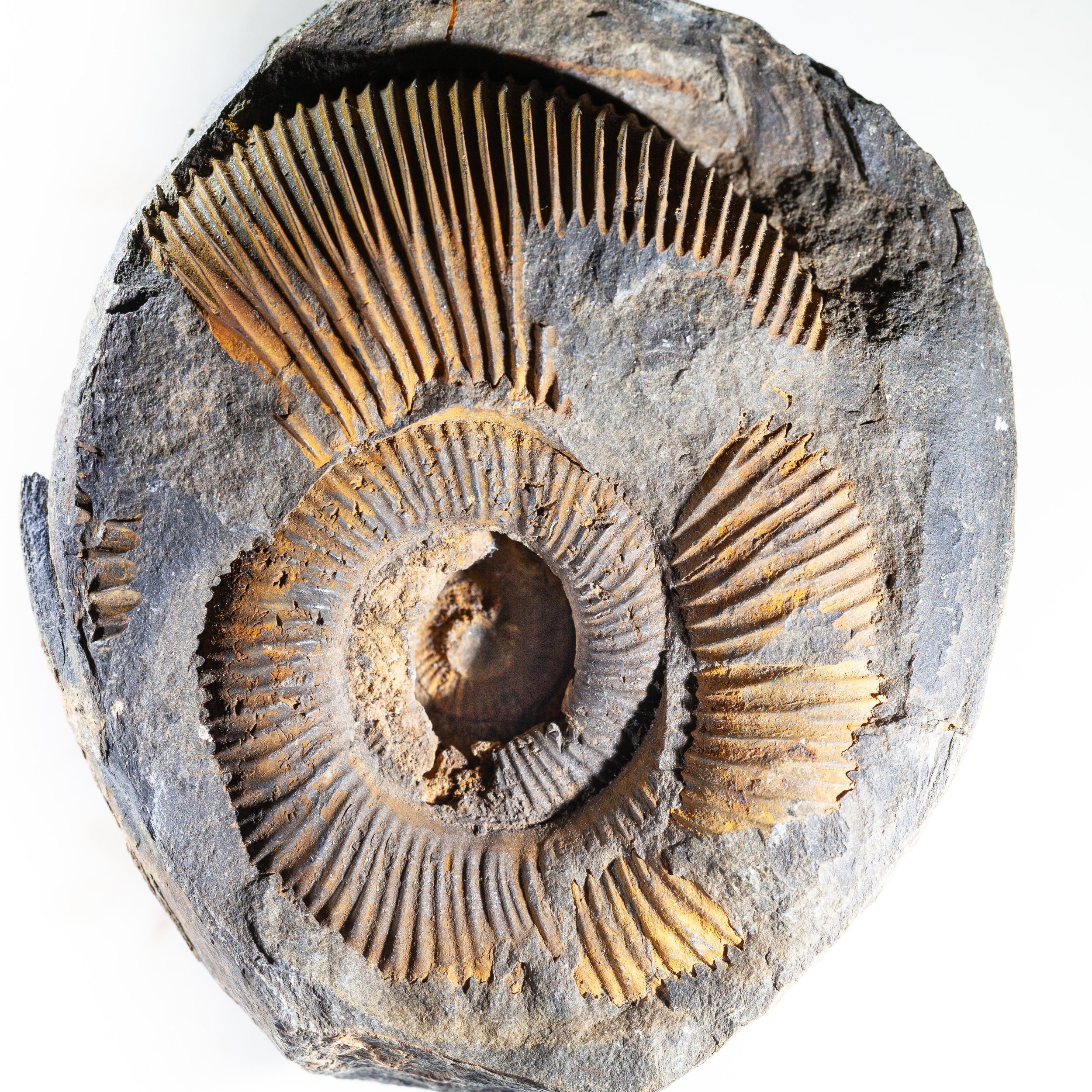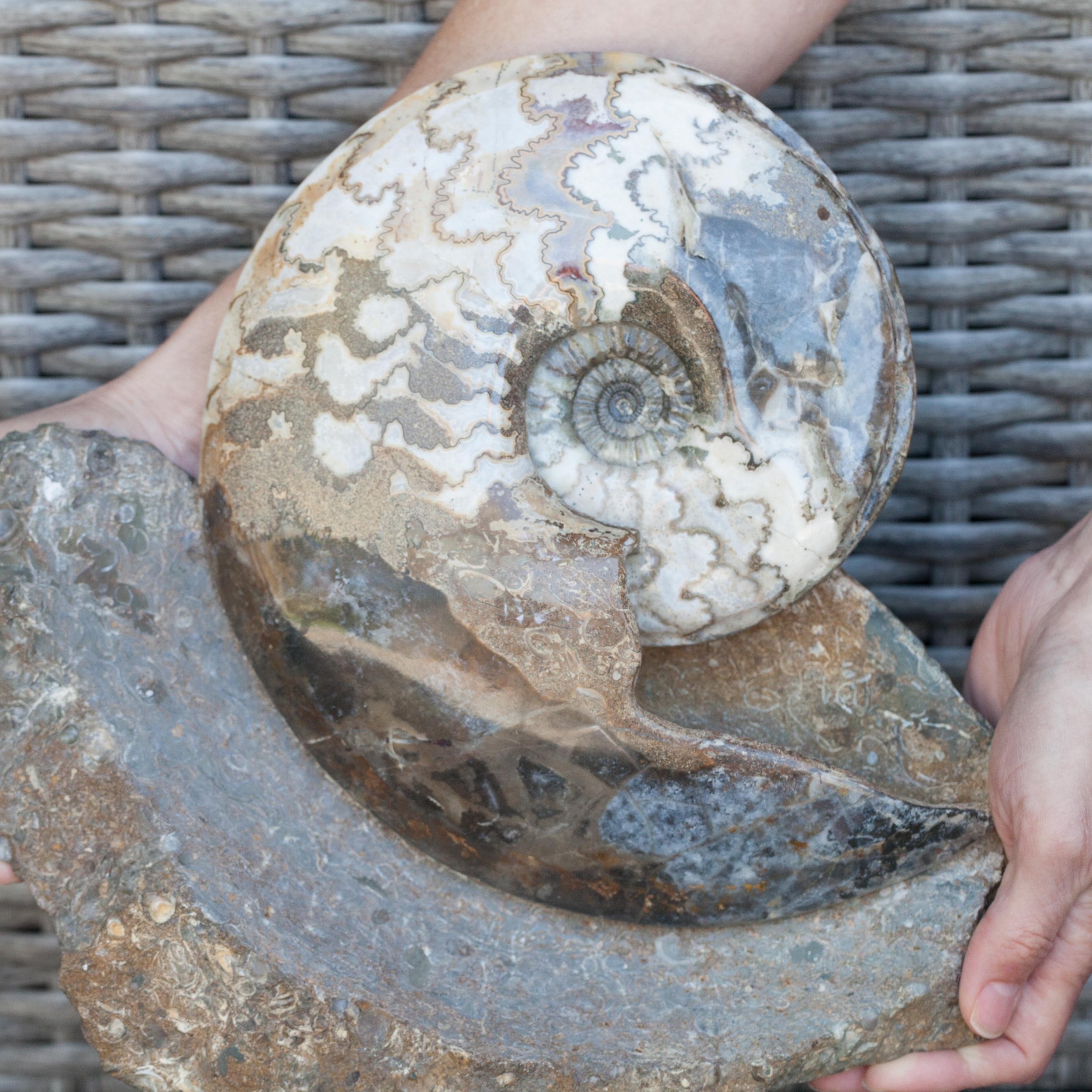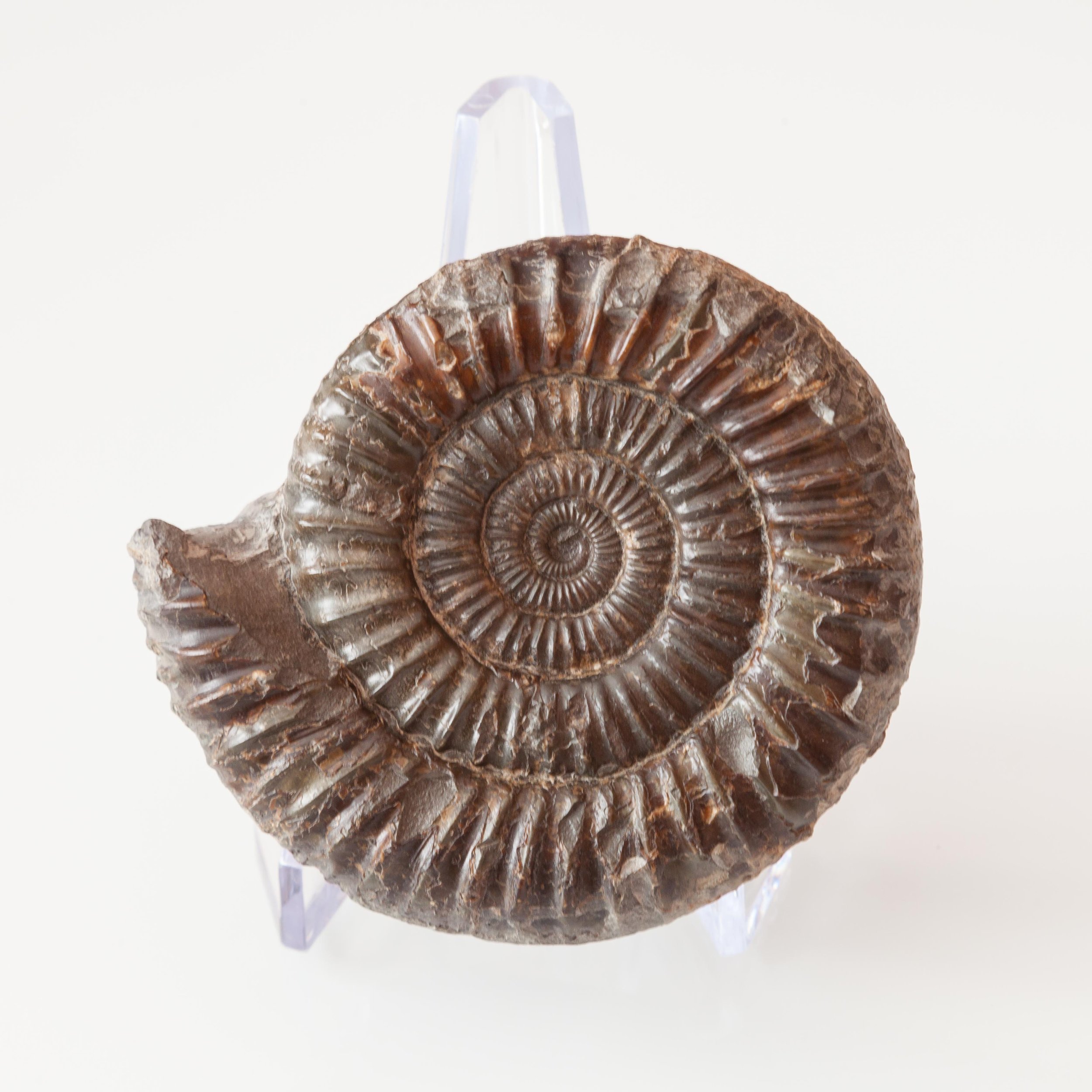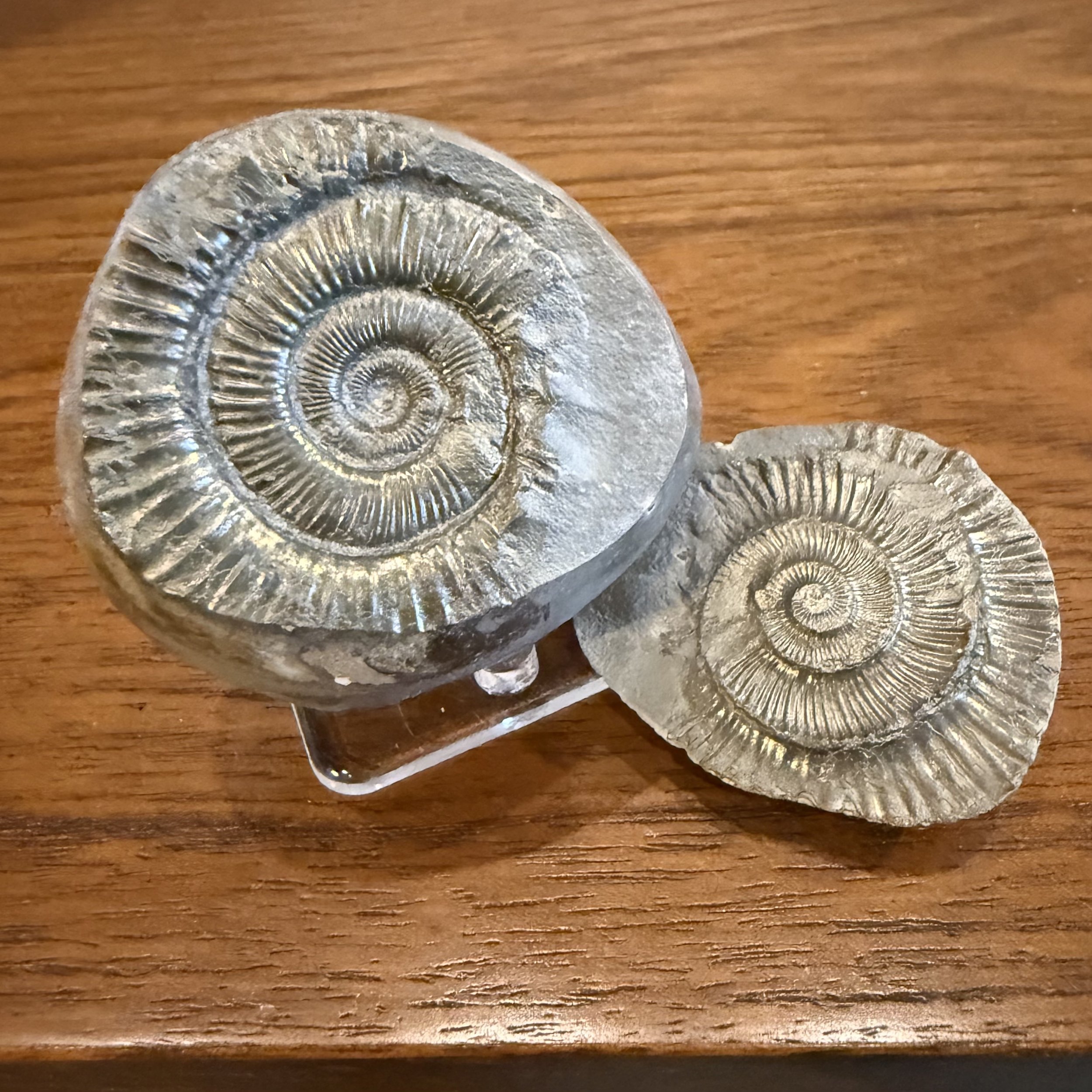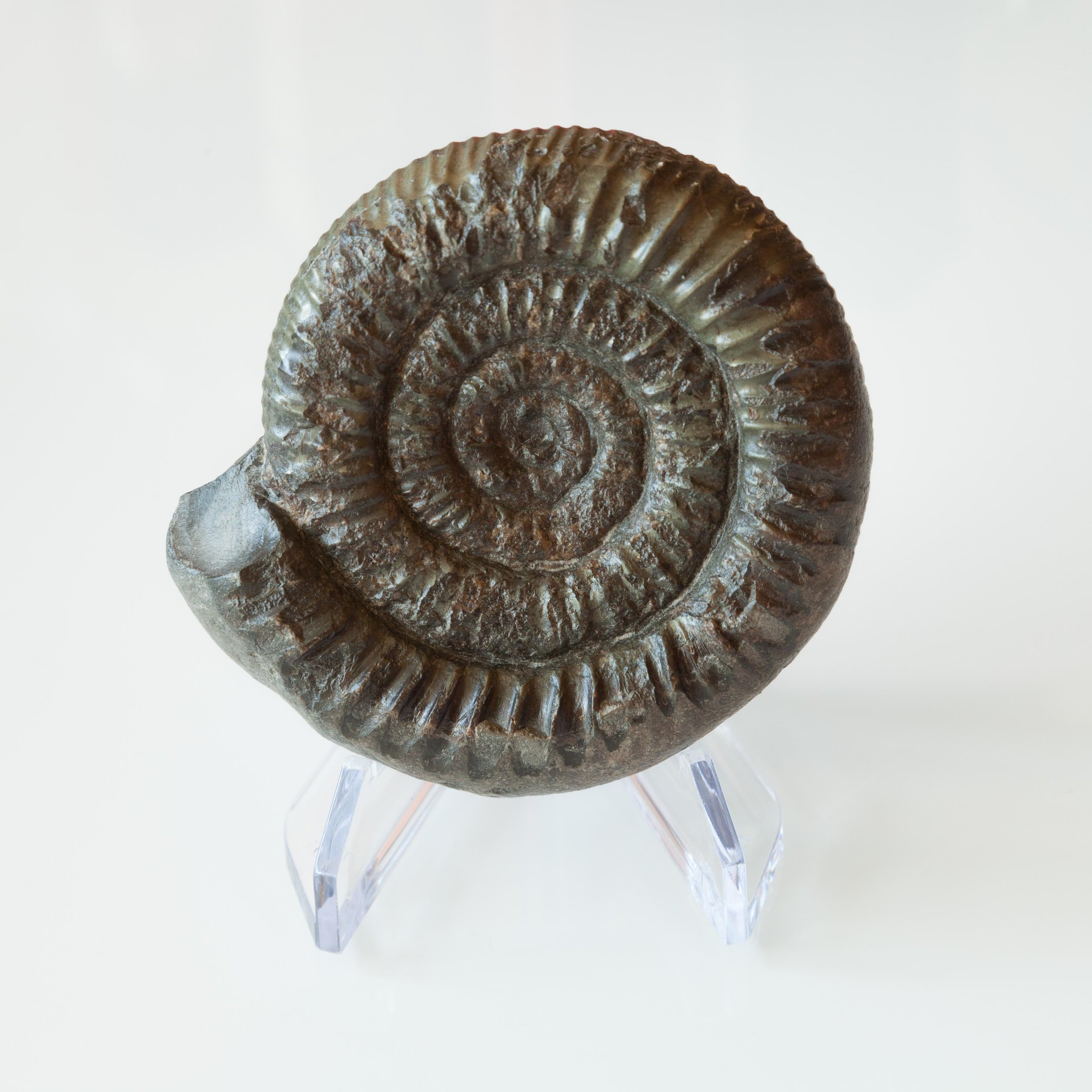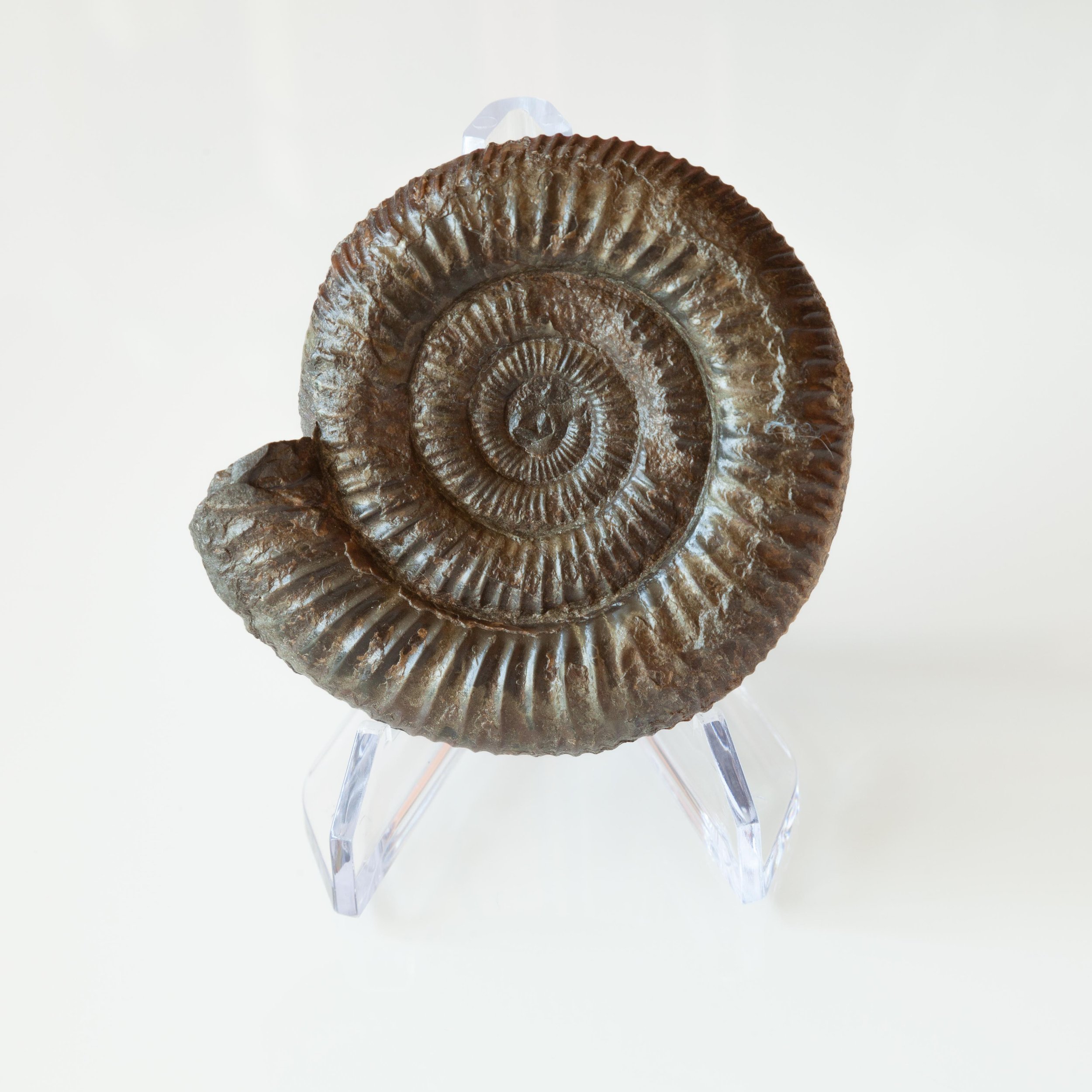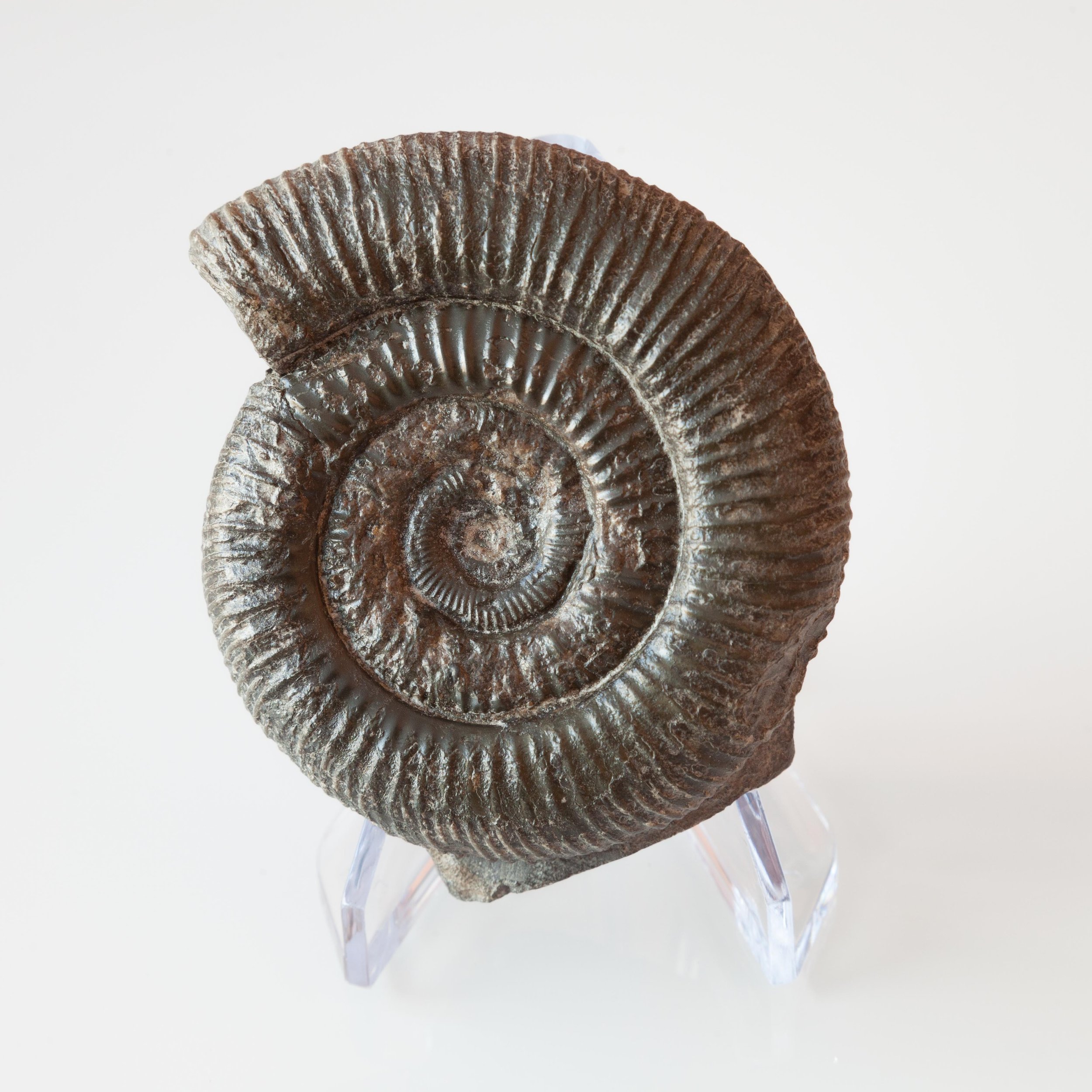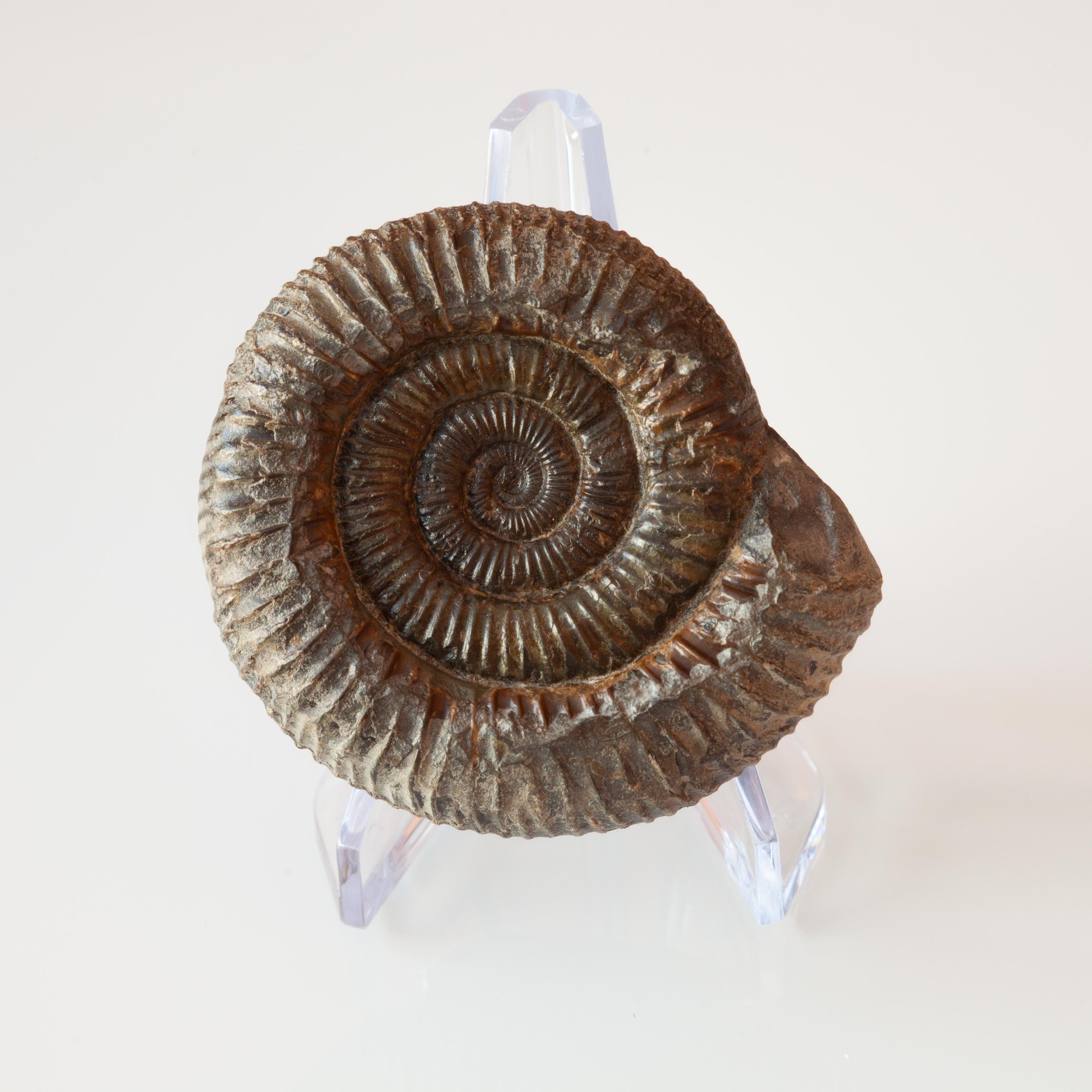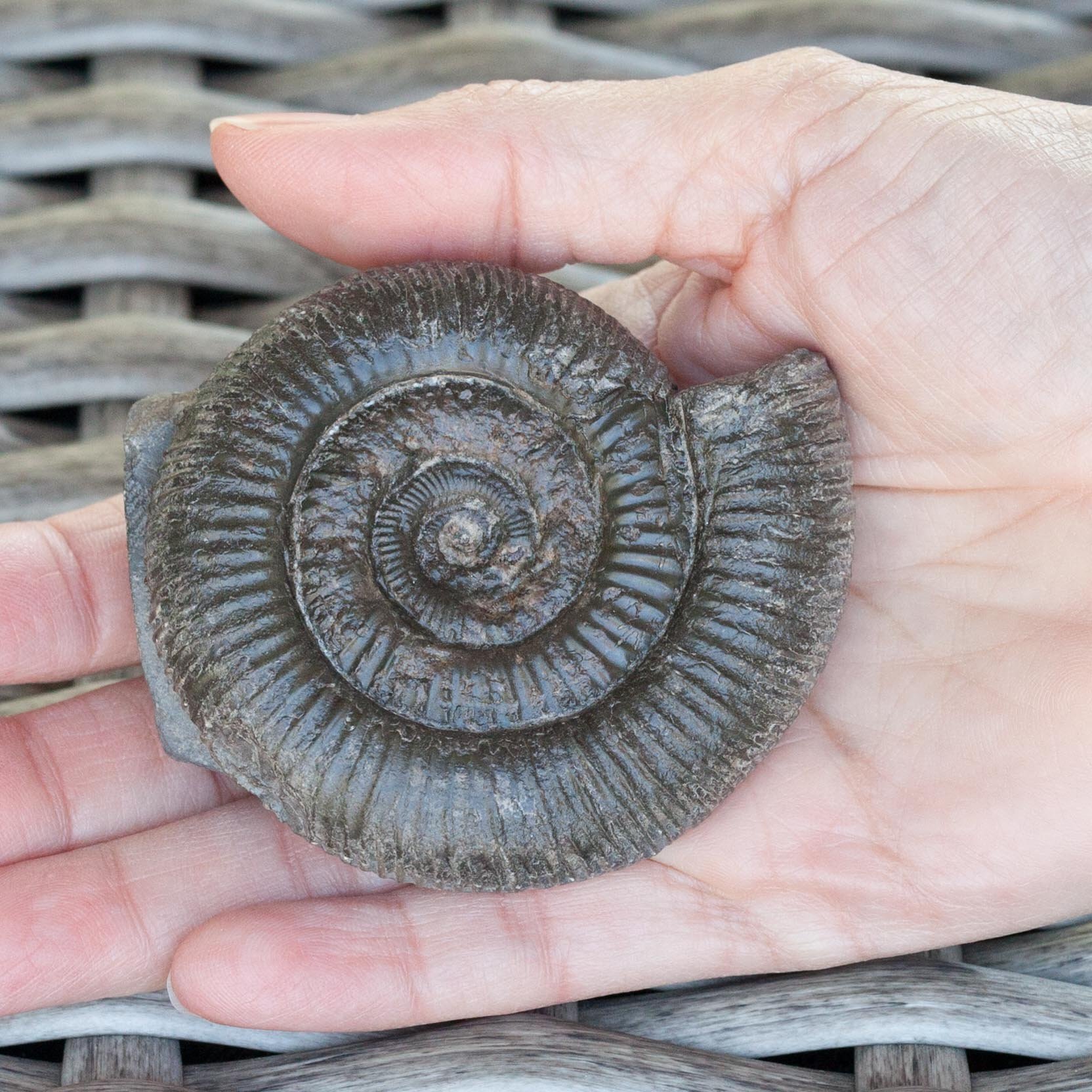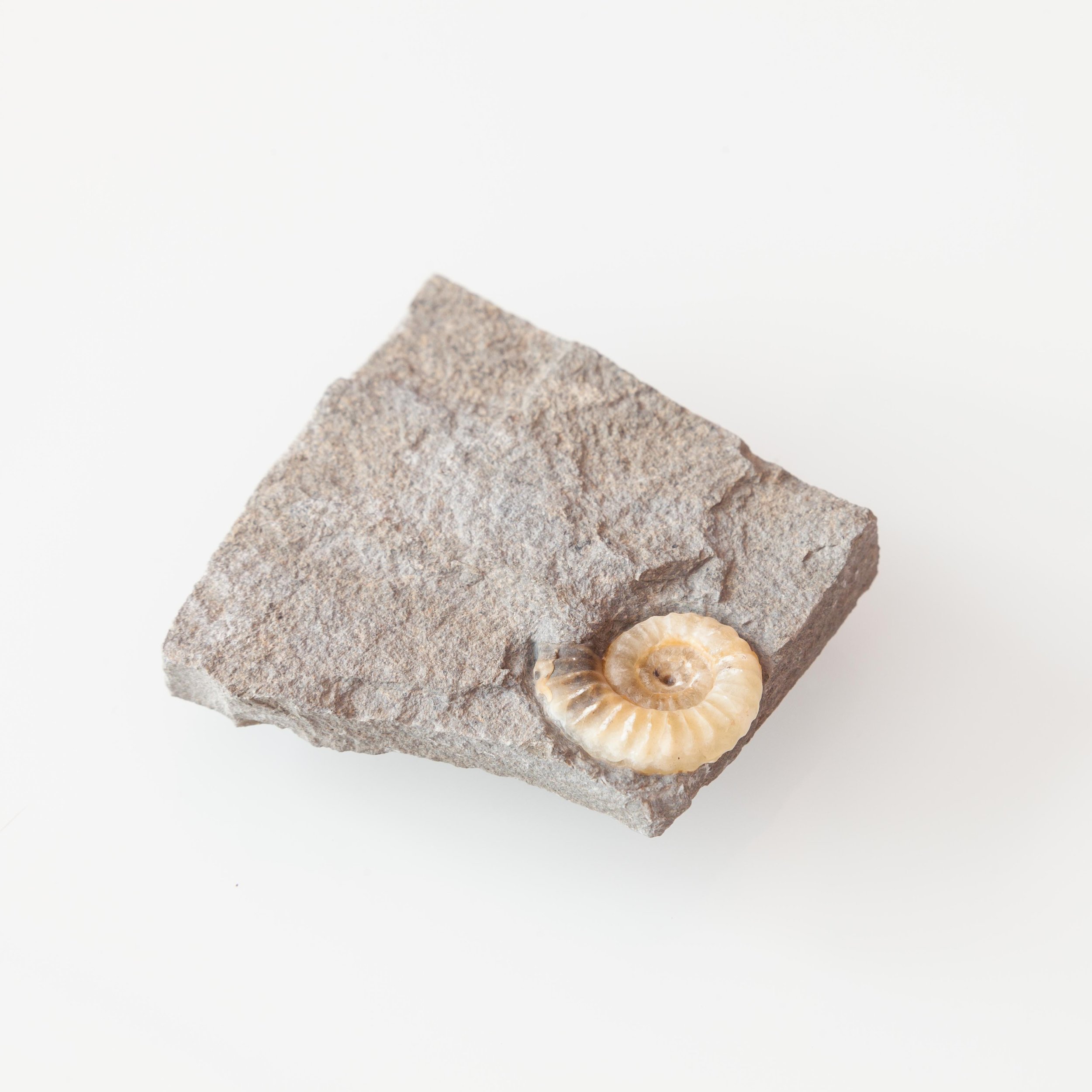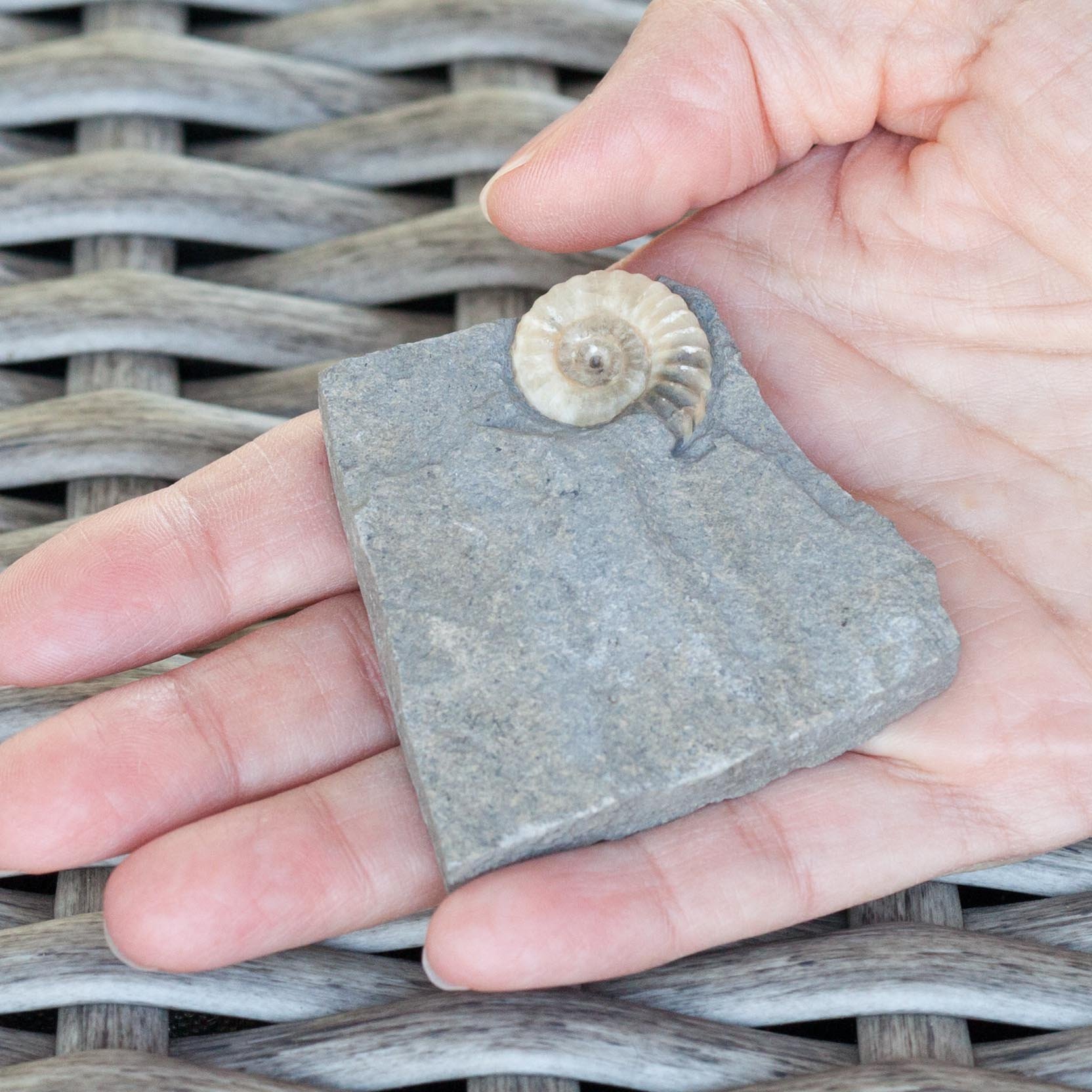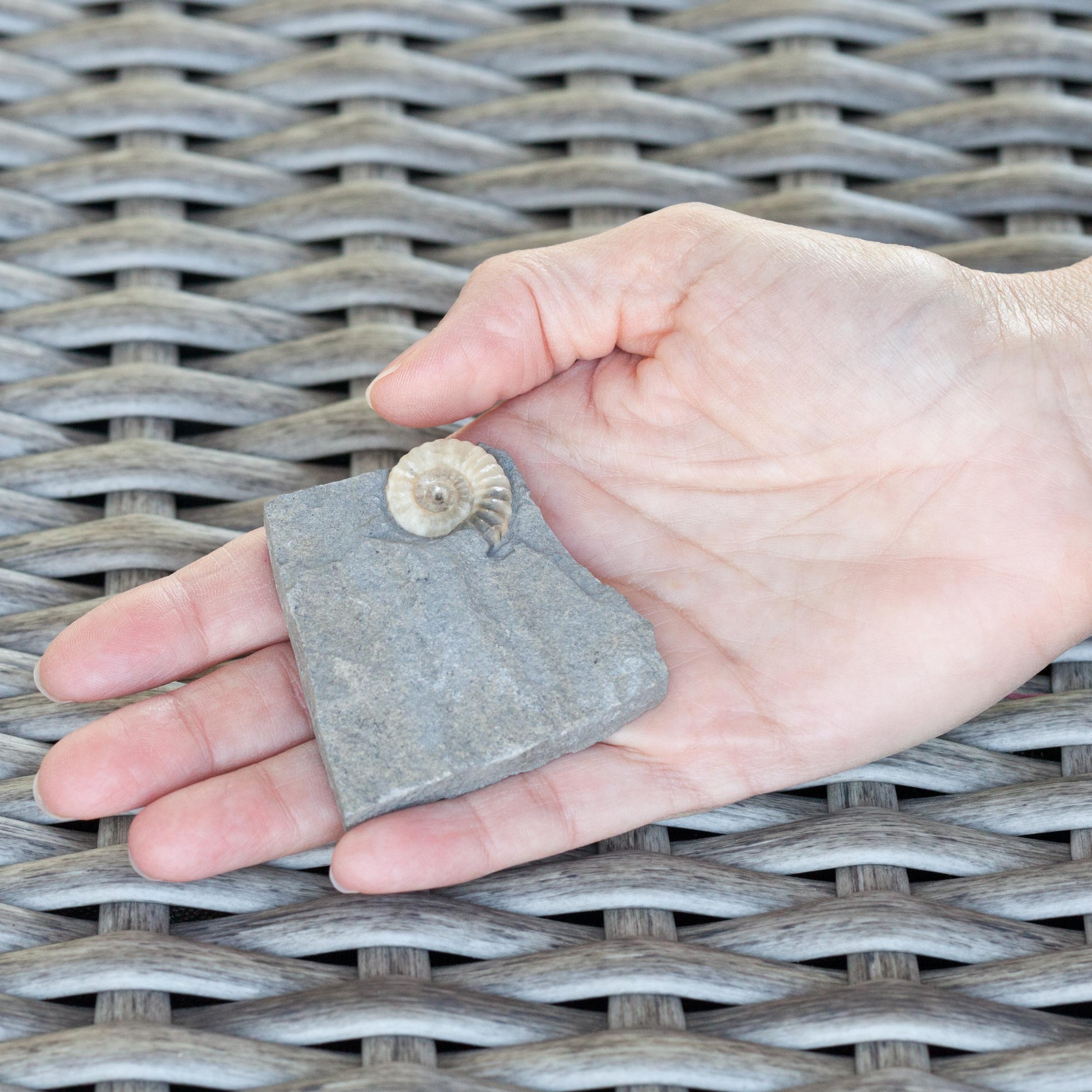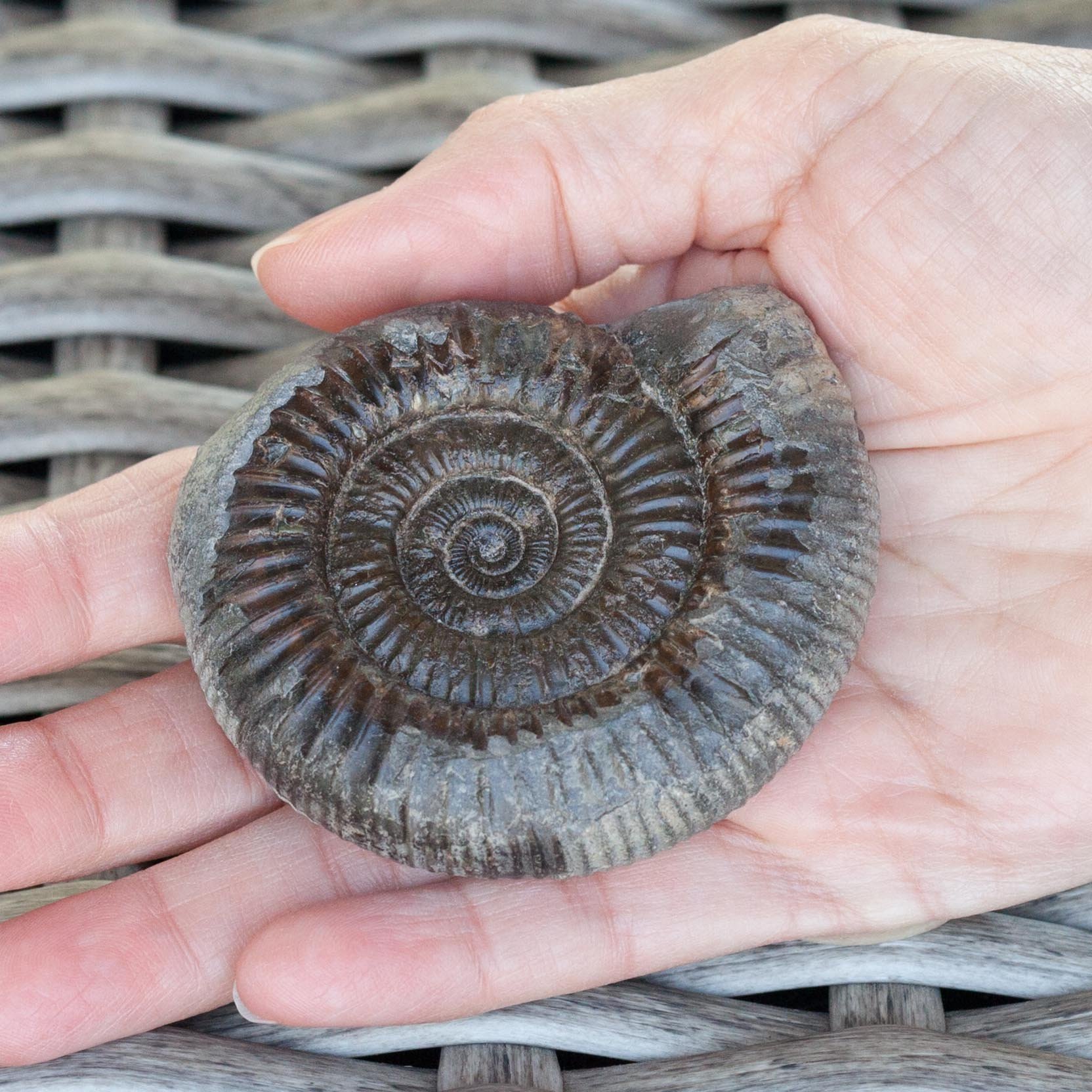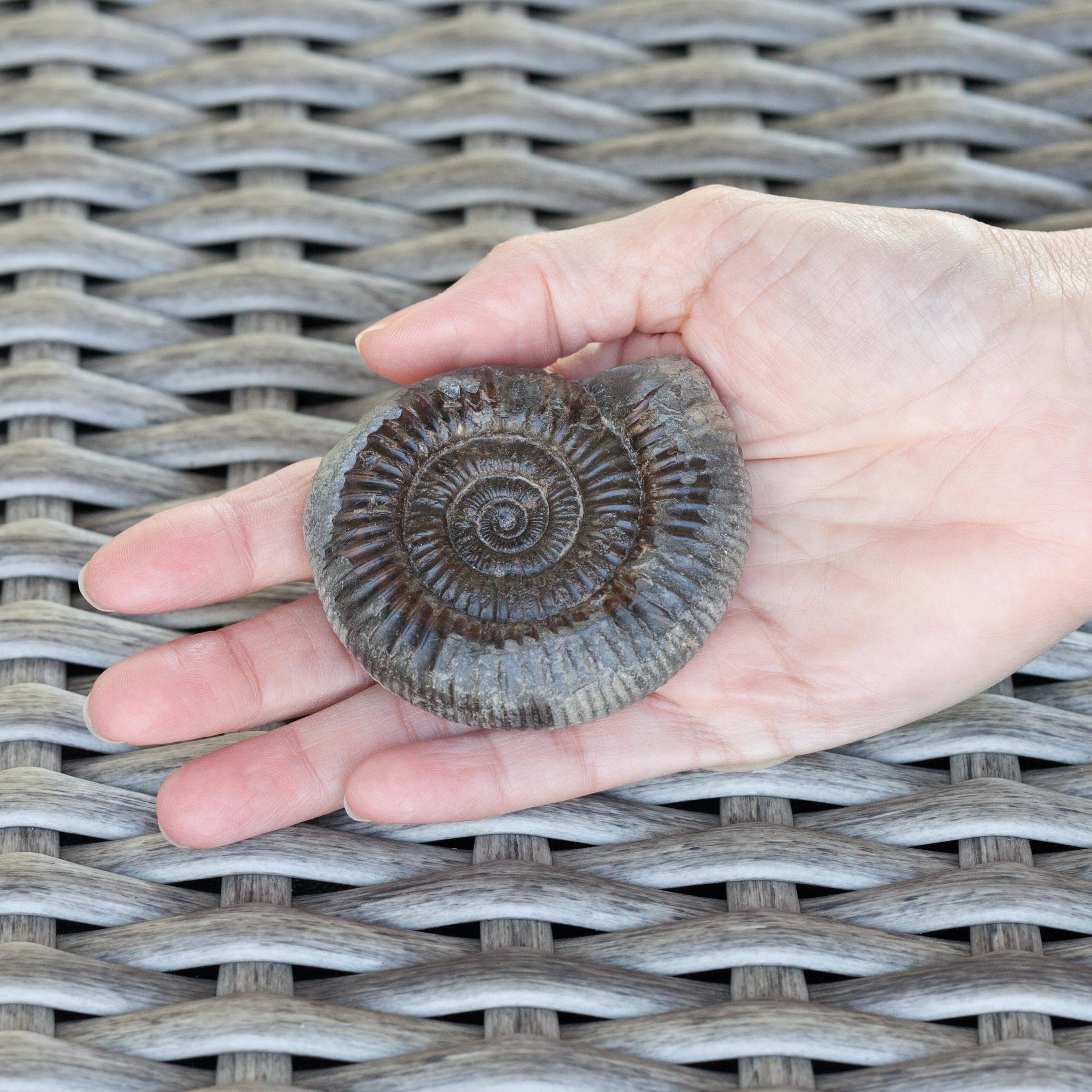Discoscaphites conradi
Vendor: Gold Bugs
SKU Number: SQ8784775
Ammonites are an extinct group closely related to modern day squids and octopus. This is a stunning, pearly white Discoscaphites ammonite from the Trail City Member, Fox Hills Formation, Late Cretaceous of South Dakota. There is an iridescent shine on the nacreous shell that reflects a spectrum of color when rotated in light. This specimen has very clear, high relief ornamentation throughout the whole coil of the shell.
Full dimensions are listed below.
Vendor: Gold Bugs
SKU Number: SQ8784775
Ammonites are an extinct group closely related to modern day squids and octopus. This is a stunning, pearly white Discoscaphites ammonite from the Trail City Member, Fox Hills Formation, Late Cretaceous of South Dakota. There is an iridescent shine on the nacreous shell that reflects a spectrum of color when rotated in light. This specimen has very clear, high relief ornamentation throughout the whole coil of the shell.
Full dimensions are listed below.
Vendor: Gold Bugs
SKU Number: SQ8784775
Ammonites are an extinct group closely related to modern day squids and octopus. This is a stunning, pearly white Discoscaphites ammonite from the Trail City Member, Fox Hills Formation, Late Cretaceous of South Dakota. There is an iridescent shine on the nacreous shell that reflects a spectrum of color when rotated in light. This specimen has very clear, high relief ornamentation throughout the whole coil of the shell.
Full dimensions are listed below.
Additional Information
The genus Discoscaphites has a wide geographical distribution that includes the Cretaceous of Greenland, Alabama, Arkansas, California, Colorado, Kansas, Maryland, Mississippi, Missouri, New Jersey, South Dakota, Tennessee, Texas, Wyoming and North Carolina. Discoscaphites is present in the famous Pinna Layer of the Tinton Formation of New Jersey (above the iridium anomaly), although some researchers prefer a conservative interpretation when dating the Pinna Layer, Discoscaphites appears to have been a K-Pg survivor and became exist sometime later.
During the Upper Cretaceous, a huge shallow inland sea stretched from what currently is the Gulf of Mexico northward and through Canada. Ammonites including members of the scaphites, Order: Ammonitida, Family: Scaphitidae were widespread.
The Fox Hills Formation, which spans from Alberta down into Colorado, was formed when the Western Interior Seaway retreated in the late Cretacous. It contains a diverse biota, including Tyrannosauroid dinosaurs like T-Rex and marine mosasaurs. The formation is also well known for several species of scaphites having their exterior shells preserved as mother of pearl, an opal-like and iridescent mineral sometimes called ammolite. The color you see often changes as the angle of viewing or of light source changes, because of multiple reflections within layers of the material. Fox Hill scaphites typically exhibit red and/or green hues, and browns, a mixture of red and green. Others are whitish, a nearly uniform mixture of the color spectrum.
The primary diagnostic feature of scaphites is somewhat J-shaped, bauplan, one that is less tightly coiled than most ammonites. They are grouped among the heteromorph ammonites comprising suborder Ancyloceratina, because of these irregularly-coiled shells. The scaphites of Fox Hills Formation are normally found in concretions, like fossils of Mazon Creek, some very large, that weather out from stream beds and hillsides. And like Mazon Creek, exquisite preservation is often found. Some of the different scaphite species exhibit shell ornamentation, including tubercles, sutures, keels, and ribs.










